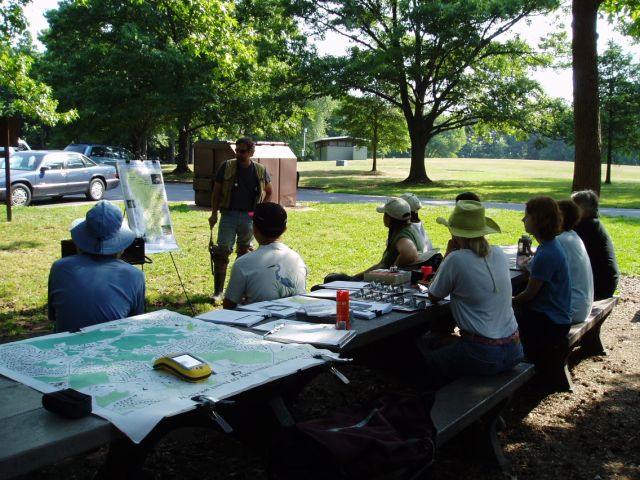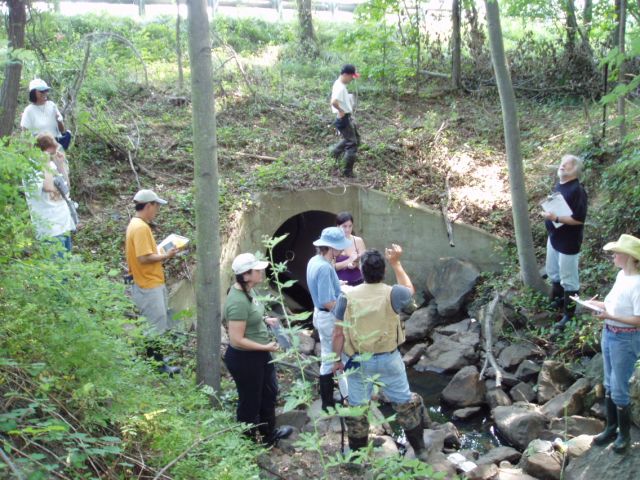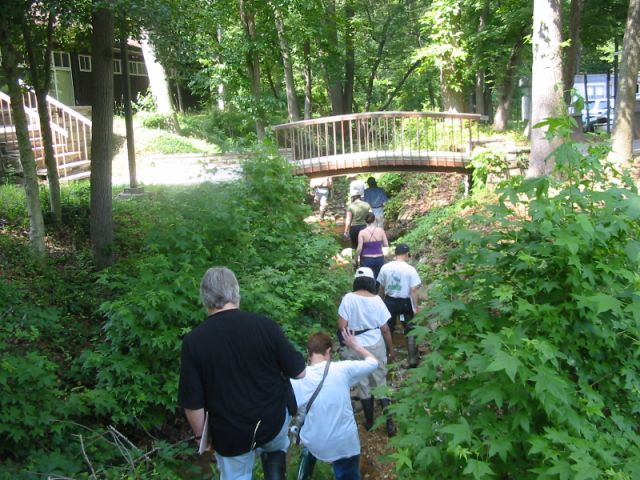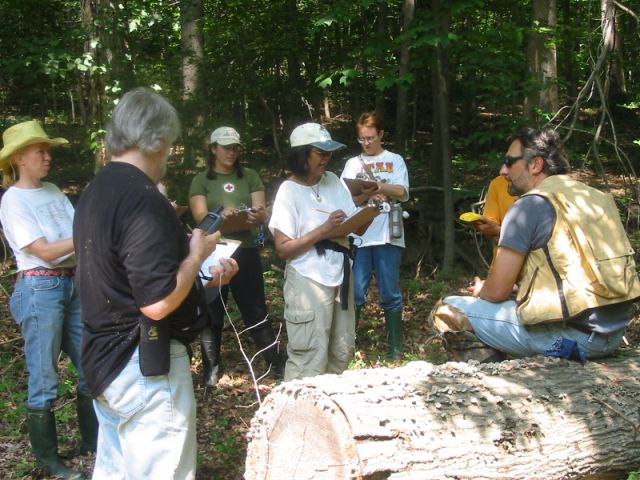Trash Survey Training
June 2006
The Metropolitan Washington Council of Governments (MWCOG) held a trash survey training session on Saturday, June 17th, at Still Creek in Greenbelt, MD. Participants included local watershed group members and educators such as the Anacostia Watershed Society, Chesapeake Arts, Education and Research Foundation, FOSC, and Georgetown University teen program outreach leaders. The Anacostia Trash Workgroup (ATW), formed by MWCOG, began this surveying in our own Sligo Creek and other tributaries in 1998. We have trash data to 2004. See a graphic of The Anacostia Wastershed Tributary and Tidal River Shoreline Trash Survey 2003-2005.
The purpose of the training was to get the watershed groups in on the surveying, as the ATW can only do so much. The ATW has covered about 17 miles per year in the watershed surveying, and there are roughly 300 miles or streams in the watershed. They are encouraging people to get out and walk the streams. The focus has been on the lower ends of streams where there is most trash and the highest population density. Hickory Run in the District is the worst spot. Upper Beaverdam Creek has been relatively clean because it has been largely government restricted.
John Galli from MWCOG gets volunteers prepped to survey.

The methodology is meant to be simple. Volunteers were given click counters and a basic survey sheet. Here are some pointers on surveying. See the Anacostia Stream Trash Surveying Methodology and Indexing System for fuller details and a copy of the survey sheet.
- It is crucial to know the length of the stream section one is measuring. FOSC has these data. The survey measures items per 100 ft. A GPS can also be used.
- The best time of year to survey is early spring before the vegetation is too high.
- Start at a feature, such as a road.
- Survey trash larger than 1 inch in diameter from top of bank to top of bank.
- Walk in the streambed, surveying in creek and from side to side.
- For wider streams, use a zig-zag approach.
- The pace is a normal walking speed.
Starting the survey

Surveying the streambed

The survey data can be used to target cleanup areas and identify more places to install trash fences, etc. Stay tuned to see how and where FOSC will do trash surveying. We will also have to see how the Total Maximum Daily Load issue will pan out, with enforcement measures to keep trash out of the streams hopefully federally mandated.
Tallying results



